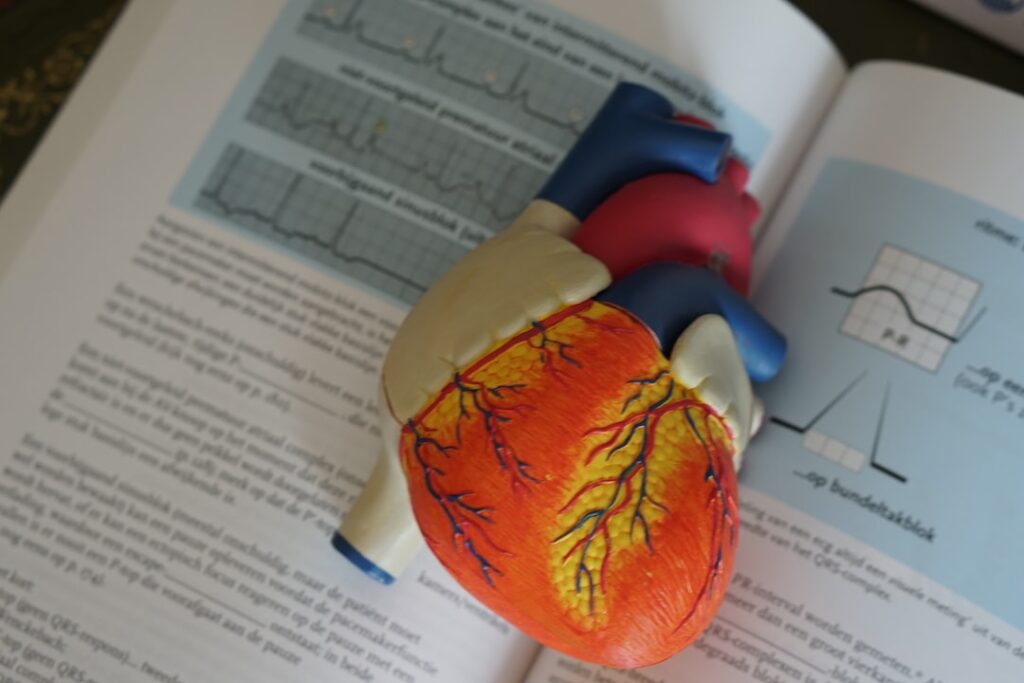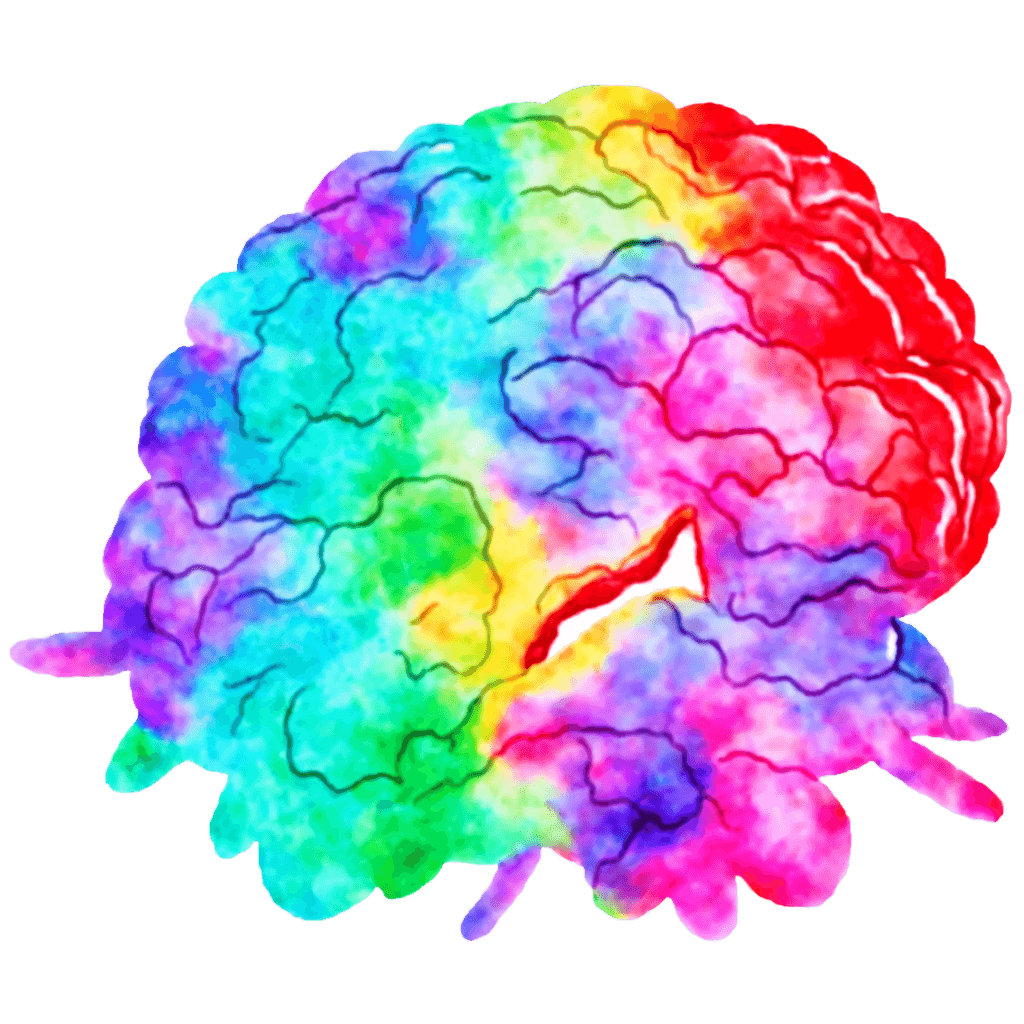This article explores the connection between autism, ADHD, and Ehlers Danlos Syndrome, highlighting the shared symptoms, co-occurrence of conditions, available treatments, and resources for support.
Understanding Autism, ADHD, and Ehlers Danlos Syndrome
Autism, ADHD, and Ehlers Danlos Syndrome are complex conditions that have significant impacts on individuals’ lives. Autism is often associated with challenges in social interaction, communication, and repetitive behaviours, while ADHD is characterised by symptoms of inattention, hyperactivity, and impulsivity. On the other hand, Ehlers Danlos Syndrome encompasses a group of genetic disorders affecting connective tissues, leading to a range of symptoms, including joint hypermobility.
Individuals with autism, ADHD, and Ehlers Danlos Syndrome commonly experience various challenges and overlapping symptoms. For instance, individuals with autism may exhibit sensory sensitivities, making it difficult for them to process and respond to sensory information like touch, sound, and light. Similarly, individuals with Ehlers Danlos Syndrome may also experience sensory issues, such as heightened sensitivity to pain and touch due to their connective tissue disorder. Understanding the shared symptoms and challenges among these conditions is crucial in providing comprehensive and effective support and care for individuals affected by them.
Moreover, individuals with ADHD often struggle with executive function skills such as planning, organisation, and time management. These challenges can significantly impact their daily lives, education, and work. In the same vein, individuals with Ehlers Danlos Syndrome, especially those with joint hypermobility, may also face difficulties in motor skills and coordination due to the instability of their joints. Therefore, recognising these commonalities among the conditions can aid in the development of tailored interventions and therapies to address the diverse needs of individuals with autism, ADHD, and Ehlers Danlos Syndrome.
The Connection: Joint Hypermobility and Neurodivergence
The connection between joint hypermobility and neurodivergence is a significant area of research, shedding light on the overlapping symptoms and conditions associated with Ehlers Danlos Syndrome and autism. Studies have found that individuals with joint hypermobility , Ehlers Danlos Syndrome (EDS), and hypermobility spectrum disorders are more likely to be autistic, highlighting a potential link between these conditions. For instance, a study by BSMS revealed that over 50% of neurodivergent participants had elevated levels of hypermobility, suggesting a strong association between joint hypermobility and autism.
Moreover, neurodivergent individuals with joint hypermobility have reported experiencing more symptoms of pain and dysautonomia. This overlap of symptoms indicates the complexity of managing these conditions and the need for tailored medical intervention. Additionally, the Beighton Scoring System, which is a standard physical assessment to identify joint hypermobility, is recommended for use in identifying joint hypermobility in autistic individuals. This system can be an essential tool for healthcare professionals to diagnose and understand the extent of joint hypermobility in individuals with autism, enabling them to provide appropriate care and support.
The high prevalence of joint hypermobility in autistic individuals and the increased symptoms of pain and dysautonomia highlight the need for greater awareness and understanding of this association. It is crucial for medical practitioners to recognise the interconnection between joint hypermobility and neurodevelopmental conditions like autism and to develop targeted interventions to address the specific needs of individuals with these overlapping conditions. This comprehensive approach can lead to improved outcomes and better quality of life for those affected by joint hypermobility and neurodivergence.
Co-Occurrence of Conditions
The co-occurrence of Ehlers Danlos Syndrome (EDS) and autism is a topic of growing interest and concern within the medical and research communities. Studies have shown that there is a higher prevalence of EDS in individuals with autism compared to the general population, indicating a potential link between the two conditions. This presents a significant challenge for individuals and their families, as the simultaneous management of symptoms associated with both EDS and autism can be complex and demanding.
For instance, many autistic individuals with EDS often experience overlapping symptoms, such as attention-deficit/hyperactivity disorder (ADHD), learning disorders, sensory sensitivities, and mental health issues. This overlap can exacerbate the challenges faced by individuals, potentially impacting their daily functioning and overall quality of life. Moreover, both conditions are associated with coordination problems, sensory issues, autonomic dysregulation, and immune dysregulation, further complicating the clinical picture for individuals living with these co-occurring conditions. This underscores the need for a comprehensive and multidisciplinary approach to address the diverse and interconnected symptoms arising from the co-occurrence of EDS and autism.
It is crucial for healthcare professionals to be well-informed about the potential co-occurrence of these conditions, ensuring that individuals receive accurate diagnoses and appropriate support. Moreover, families and caregivers should be equipped with the necessary resources and guidance to navigate the complexities of managing these co-occurring conditions effectively. By recognising and addressing the shared symptoms and challenges associated with EDS and autism, it becomes possible to provide more targeted and holistic care to individuals affected by these conditions. [2].
Available Treatments and Therapies
When it comes to individuals affected by autism, ADHD, and Ehlers Danlos Syndrome, it’s essential to understand that they may require similar therapies and treatments due to the overlapping symptoms and challenges associated with these conditions. For instance, individuals with autism often benefit from behavioural therapies, speech therapy, and occupational therapy to address communication difficulties and sensory issues, which can also be beneficial for individuals with ADHD and Ehlers Danlos Syndrome. Moreover, those with Ehlers Danlos Syndrome may require physical therapy and pain management strategies to address joint hypermobility and chronic pain, which can also be beneficial for individuals with autism and ADHD who experience similar issues [4].
Furthermore, management of symptoms can be achieved with support and advice from healthcare professionals, including a multidisciplinary approach involving specialists such as neurologists, geneticists, occupational therapists, and psychologists. For example, individuals with Ehlers Danlos Syndrome and autism may benefit from a comprehensive treatment plan that addresses their physical, neurological, and psychological needs. This could include tailored exercise regimens to improve joint stability, cognitive behavioural therapy to address anxiety or depression, and medications to manage autonomic dysregulation [4].
In addition, there is a pressing need for specific recognition, research, and treatments for the association between Ehlers Danlos Syndrome and autism. Currently, there is a lack of specific guidelines or targeted interventions for individuals who have both conditions. Therefore, increasing awareness among healthcare professionals and conducting further research to understand the unique needs of individuals with both Ehlers Danlos Syndrome and autism is crucial to developing effective treatments and improving the quality of life for these individuals. These efforts can lead to the development of tailored interventions that address the complex interplay of symptoms and provide the necessary support for individuals affected by the co-occurrence of these conditions.

Support and Resources
The Ehlers-Danlos Society has been actively working to increase awareness of the intricate relationship between autism and joint hypermobility. By collaborating with experts like Dr. Carolina Baezo-Velasco, who is an expert in Ehlers Danlos Syndrome and Autism, the society has been able to provide valuable insights and resources for individuals and families affected by these conditions. Their efforts have been instrumental in shedding light on the co-occurrence of Ehlers Danlos Syndrome and autism, offering support and guidance to those navigating these complex conditions.
For parents of children with autism who exhibit symptoms consistent with Ehlers Danlos Syndrome, obtaining a proper diagnosis and seeking appropriate treatment is crucial. The overlap of symptoms between these two conditions necessitates careful consideration and evaluation. By being proactive in seeking medical attention, parents can ensure that their child receives the necessary support and interventions tailored to their specific needs. This proactive approach can significantly impact the child’s well-being and overall quality of life, empowering them to better manage the challenges associated with the co-occurring conditions.
Furthermore, for individuals and families seeking a deeper understanding of Ehlers Danlos Syndrome in the context of autism, a wealth of resources is readily available. These resources encompass educational materials, support networks, and guidance for navigating the unique challenges posed by the co-occurrence of these conditions. Access to reliable information and support can be invaluable in empowering individuals and families to make informed decisions and navigate the complexities of living with autism and Ehlers Danlos Syndrome.
For more blog posts, please click here.
Introduction
Autism Spectrum Disorder (ASD) and Attention Deficit Hyperactivity Disorder (ADHD) are neurodevelopmental disorders that affect millions of people worldwide. Traditionally, these conditions have been studied predominantly in boys and men. However, recent research has begun to shed light on how they manifest differently in girls and women. This blog post will delve into the complex world of cooccurring ADHD and autism in females, a topic that has been largely overlooked until now.
Understanding Autism and ADHD
Before we delve into the specifics of cooccurring ADHD and autism in girls and women, it’s essential to understand what these conditions entail. Autism is a developmental disorder characterised by difficulties with social interaction, communication challenges, and repetitive behaviours. On the other hand, ADHD is marked by persistent patterns of inattention, hyperactivity, impulsivity that interfere with functioning or development.
Historically, these conditions were considered separate entities with distinct diagnostic criteria. However, recent studies have shown a significant overlap between ASD and ADHD symptoms leading to a high prevalence of cooccurring ADHD and autism. This shift in understanding has prompted researchers and clinicians to explore the connections between the two conditions more deeply, with a focus on tailored interventions and support for individuals who may experience symptoms of both. Understanding the interplay between ADHD and autism spectrum disorder can lead to more effective strategies for diagnosis, treatment, and long-term management, ultimately improving the quality of life for those affected by these complex neurodevelopmental conditions.

Cooccurring ADHD and Autism in Girls and Women
Research indicates that females with ASD are more likely to have cooccurring ADHD than their male counterparts. This dual diagnosis can exacerbate the challenges faced by these individuals as they navigate social interactions, academic performance, emotional regulation, among other areas of life.
The issue of underdiagnosis and misdiagnosis of certain disorders in girls and women is indeed a critical concern that has far-reaching implications. Societal stereotypes often associate certain disorders with males, leading to a lack of recognition and understanding when these disorders manifest in females. Additionally, the differences in symptom presentation between genders can further exacerbate the problem, resulting in many girls and women remaining undiagnosed or misdiagnosed for extended periods of time.
As a consequence of this delay in diagnosis, individuals may face significant mental health challenges, such as heightened anxiety and depression stemming from unaddressed struggles. The toll of navigating life with undiagnosed or misdiagnosed disorders can be immense, impacting daily functioning, personal relationships, and overall well-being. It is imperative to raise awareness about these disparities in diagnosis and to advocate for improved understanding and recognition of the diverse ways in which these disorders can manifest across different genders. By facilitating earlier and more accurate identification, individuals can receive the support and interventions they need to effectively manage their conditions and mitigate the associated mental health implications.
Some symptoms of comorbid ADHD and autism can include:
- Social Challenges: Girls and women with cooccurring ADHD and autism may struggle with social interaction, finding it hard to understand and interpret social cues. They might also find it challenging to form and maintain friendships.
- Sensory Sensitivities: Individuals may experience heightened sensitivities to sensory stimuli, including light, sound, touch, and taste. This can lead to discomfort and distress in everyday environments.
- Repetitive Behaviours: Engaging in repetitive movements or actions, such as hand-flapping or rocking, is common among those with cooccurring ADHD and autism. These behaviours can serve as self-soothing mechanisms.
- Difficulty with Transitions: Changes in routine or unexpected events can be particularly distressing for individuals with cooccurring ADHD and autism, leading to anxiety and meltdowns.
- Attention and Executive Functioning Challenges: Problems with sustained attention, organisation, and task completion are typical. Additionally, difficulties in planning and prioritising tasks may be apparent.
The Gender Gap: Why Are Girls and Women Overlooked?
One reason why girls and women might be overlooked when it comes to diagnosing cooccurring ADHD and autism is the gender bias in the diagnostic criteria. These criteria were developed based on studies conducted predominantly on boys and men, leading to a skewed understanding of how these conditions present in females.
Girls with ASD often exhibit less obvious signs compared to boys. They may have fewer repetitive behaviours and may be better at masking their social communication difficulties by mimicking others’ behaviours. Similarly, girls with ADHD are more likely to present with inattentiveness rather than hyperactivity, which can be mistaken for daydreaming or lack of interest.
Furthermore, societal expectations and norms often pressure girls and women to conform, leading them to develop coping mechanisms that mask their symptoms. This ‘camouflaging’ can make it even more challenging for clinicians to identify these conditions.

The Importance Of Early Diagnosis and Intervention
Early diagnosis and intervention are crucial for individuals with cooccurring ADHD and autism. It allows for timely access to therapies and supports that can significantly improve their quality of life. For girls and women, this could mean avoiding years of feeling ‘different’ without knowing why, thus preventing the onset of secondary mental health issues.
Healthcare professionals play a crucial role in recognising and understanding the gender differences in symptom presentation for Autism Spectrum Disorder (ASD) and Attention-Deficit/Hyperactivity Disorder (ADHD). It is important for them to be aware that the manifestation of these conditions can vary between boys and girls, men and women. By being knowledgeable about the unique ways in which ASD and ADHD may present in different genders, healthcare professionals can ensure more accurate diagnoses and better tailored interventions.
Moreover, it is essential for healthcare professionals to consider the possibility of dual diagnoses when assessing patients with complex profiles. This means understanding that an individual may present symptoms that align with more than one condition, such as having both ASD and ADHD. Recognizing the potential for comorbidities is vital in providing comprehensive care and support to patients.
In summary, raising awareness among healthcare professionals about gender-specific symptomatology for ASD and ADHD, as well as the potential for dual diagnoses, can lead to more effective and personalised care for individuals with these conditions.”
Conclusion
Cooccurring ADHD and autism in girls and women is a complex issue that requires further research and awareness. By understanding how these conditions manifest differently in females compared to males, we can ensure that they receive accurate diagnoses earlier in life. This will enable them to access appropriate supports sooner, improving their overall wellbeing.
In conclusion, it’s not a matter of one or the other but recognising that both can coexist. With increased awareness among healthcare providers, educators, parents, and society at large; we can ensure that girls and women with cooccurring ADHD and autism are identified early on so they can receive the help they need to thrive.
For more information on ADHD and Autism-related topics, please take a look at my other blog posts, which can be found here.
This article explores the importance of seeking a formal diagnosis for ADHD and/or Autism, discussing the benefits, advantages and disadvantages.
The Importance of Seeking a Formal Diagnosis for ADHD/autism
Seeking a formal diagnosis for ADHD or autism is both beneficial and essential for a multitude of reasons. A formal diagnosis not only provides a better understanding of the specific challenges and needs associated with these conditions but also opens the door to various benefits. For instance, being diagnosed with both ASD and ADHD allows for finding treatments and coping strategies that work for both conditions, leading to validation and self-acceptance.
Moreover, a formal diagnosis enables individuals to access appropriate support and accommodations tailored to their specific challenges and needs. It also makes them eligible for specialised services and therapies, along with legal protections and accommodations. This comprehensive understanding and access to support and accommodations can significantly improve an individual’s quality of life and well-being. Furthermore, it can reduce self-blame and improve family and couple relationships, fostering a supportive environment for individuals with ADHD or autism.
Understanding a Formal Diagnosis of ADHD or Autism
Seeking a formal diagnosis for ADHD or autism offers a multitude of benefits that can significantly impact an individual’s life. One of the most crucial advantages is gaining access to tailored support and accommodations that specifically address the challenges and needs associated with these conditions. For instance, with a formal diagnosis, individuals can receive personalised interventions, therapy, and educational support that are specifically designed to address their unique symptoms and difficulties.
Moreover, a formal diagnosis plays a pivotal role in fostering validation and self-acceptance. It allows individuals to gain a deeper understanding of their condition, which can lead to a sense of acceptance, empowerment, and relief. Armed with a formal diagnosis, individuals can embark on a journey to find treatments and coping strategies that are tailored to both ADHD and autism, ultimately contributing to an improved quality of life and overall well-being.
Seeking a formal diagnosis opens the door to a range of specialised services and therapies that may not have been accessible otherwise. This can include access to occupational therapy, speech therapy, and other targeted interventions that can significantly enhance an individual’s daily functioning and quality of life. Additionally, a formal diagnosis paves the way for legal protections and accommodations, such as workplace accommodations and educational support, ensuring that individuals receive the necessary resources to thrive in various aspects of their lives.
It is important to note that seeking a formal diagnosis not only benefits the individual directly, but it also has a positive impact on their support system. By increasing access to help and support, reducing self-blame, and improving family and couple relationships, a formal diagnosis can foster a more supportive and understanding environment for the individual, ultimately contributing to their overall well-being and success.

Advantages and Disadvantages of Seeking a Formal Diagnosis
There are many benefits for diagnosing one’s ADHD and/or autism. Firstly, a formal diagnosis provides validation and self-acceptance. It allows individuals to understand themselves better, including their personal strengths and needs. This understanding can be empowering and can lead to the adoption of coping strategies that are tailored to their specific challenges. By embracing a formal diagnosis, individuals can also access a supportive network of professionals and peers who understand their experiences, thereby reducing feelings of isolation and fostering a sense of belonging within a community.
In addition to the personal benefits, a formal diagnosis enables individuals to access appropriate support and accommodations. This can be instrumental in navigating challenges related to ADHD or autism in various aspects of life, including education, employment, and social interactions. Furthermore, a diagnosis may open the door to specialised services and therapies that are specifically designed to address the unique needs of individuals with ADHD or autism. These services can range from behavioural therapies to occupational therapy, speech therapy, and other interventions that are tailored to the individual’s diagnosis, potentially leading to improved outcomes and overall well-being.
However, it is essential to acknowledge the potential disadvantages associated with seeking a formal diagnosis. For instance, mandatory disclosure of a diagnosis in certain careers can lead to stigmatisation or discrimination, making it a challenging decision for some individuals. The process of obtaining a formal diagnosis can be costly and time-consuming, often involving long waitlists for assessments. These barriers can create additional stress and financial strain for individuals seeking a diagnosis. Therefore, while the benefits of a formal diagnosis are substantial, it is crucial to weigh them against the potential challenges and make an informed decision based on individual circumstances and needs.
The Growing Trend of Self-Diagnosis
The internet and social media have significantly contributed to the increasing trend of self-diagnosis of autism and ADHD. People are now able to access a wealth of information, personal experiences, and self-assessment tools online, leading them to recognise symptoms and traits that align with ADHD or autism. This accessibility has empowered individuals to self-reflect and self-identify, especially when traditional diagnostic processes may be inaccessible due to long waitlists, financial constraints, or lack of understanding from healthcare providers.
Moreover, the debate surrounding self-diagnosis revolves around the validity and implications of this practice. While some argue that self-diagnosis can lead to misinterpretation and may not account for the full spectrum of symptoms and impact, others advocate for its empowering nature. For many individuals, self-diagnosis serves as a crucial first step towards understanding themselves better and seeking the support they need. It creates a sense of community and solidarity among neurodivergent individuals, allowing them to share experiences, coping strategies, and insights, ultimately fostering a supportive environment for those who may feel isolated or misunderstood.
One example of the positive impact of self-diagnosis is the way it has provided an avenue for individuals who would otherwise have been overlooked to recognise their neurodivergent traits. This is especially true for women, non-binary individuals, and people of colour who historically have faced challenges in obtaining formal diagnoses due to biases and misconceptions amongst healthcare professionals. Through self-diagnosis, these individuals can gain a better understanding of themselves and their needs, enabling them to access relevant support and accommodations, and connect with others who share similar experiences, thereby reducing the sense of isolation and offering a platform for advocacy and empowerment within the neurodivergent community.

Gender Disparities in Diagnosis
Gender disparities in the diagnosis of autism and ADHD are quite significant, with boys being diagnosed at an average age of 8, while girls typically receive a diagnosis around the age of 12. This delay in diagnosis for girls can have profound implications, as it may result in unmet needs and challenges going unnoticed or unaddressed. Research has revealed that prevalence rates of autism in women are higher than previously thought, indicating that there may be a significant number of undiagnosed women and girls on the autism spectrum who could benefit from a formal diagnosis.
For women who receive a formal diagnosis, the advantages are multifaceted. Firstly, it can bring a sense of relief, providing an explanation for the challenges they have faced throughout their lives. This relief is often accompanied by a newfound clarity about their strengths and difficulties, which can be empowering and aid in self-acceptance. Moreover, a formal diagnosis can foster a sense of belonging, as it connects women with a community of individuals who share similar experiences and can provide support and understanding. Importantly, a formal diagnosis also allows women to learn coping strategies tailored to their specific needs, enhancing their ability to navigate everyday life and relationships.
Women may arrive at a formal diagnosis through various pathways. Some women are initially diagnosed with other conditions, such as anxiety or depression, before eventually receiving a diagnosis of autism or ADHD. Others may have a family member who receives a diagnosis, which prompts them to explore the possibility of their own neurodevelopmental differences. Additionally, the widespread availability of information on the Internet has empowered many women to research and recognise their own traits and challenges, leading them to seek a formal diagnosis to gain a deeper understanding of themselves.
Conclusion
Seeking a diagnosis for ADHD or autism brings a multitude of benefits that significantly impact an individual’s life. One of the primary advantages is the provision of a better understanding of the specific challenges and needs associated with these conditions. For instance, a formal diagnosis can shed light on the unique ways in which ADHD or autism may affect an individual’s daily life, social interactions, and emotional well-being. This understanding serves as a crucial foundation for developing tailored support strategies and interventions, which can significantly improve the individual’s quality of life. Additionally, a formal diagnosis allows individuals to gain insights into their strengths, enabling them to harness these positive attributes as they navigate their neurodiverse journey.
Moreover, seeking a formal diagnosis is essential for accessing appropriate support and accommodations. Individuals with ADHD or autism often encounter various challenges in academic, professional, and social settings. Through a formal diagnosis, they become eligible for specialised services and therapies specifically designed to address their unique needs. This can encompass a spectrum of interventions, including cognitive behavioural therapy, occupational therapy, and social skills training. Furthermore, a formal diagnosis also provides individuals with legal protections and accommodations, ensuring they receive the necessary support and adjustments in educational and workplace settings. These accommodations can play a pivotal role in mitigating the impact of ADHD or autism-related challenges, promoting a more inclusive and enabling environment for individuals with neurodevelopmental differences.
Additionally, the process of seeking a formal diagnosis offers a profound sense of validation and self-acceptance. It goes beyond the mere acquisition of a diagnostic label; it signifies the recognition and affirmation of an individual’s experiences and challenges. This validation can lead to reduced self-blame and enhanced self-understanding, empowering individuals to embrace their neurodivergent identity with confidence. Furthermore, a formal diagnosis opens the door to a supportive community, enabling individuals to connect with others who share similar experiences and create a network of understanding and solidarity. Ultimately, the journey of seeking a formal diagnosis is not just about obtaining a label; it is a transformative process that fosters empowerment, self-compassion, and a sense of belonging.
For more blog posts, please click here.
[1] Source: https://www.webmd.com/add-adhd/adult-adhd-autism
A comprehensive guide on managing the comorbidity of ADHD and autism, including understanding the challenges, diagnostic process, strategies for management, treatment options, and support for individuals and families.
Overview of ADHD and Autism Comorbidity
Individuals with comorbid ADHD and autism face a multitude of challenges that can significantly impact their daily lives. For instance, they may struggle with executive functioning, social interaction, sensory processing, and emotional regulation, leading to heightened stress and frustration for both the individuals and their families. Moreover, the comorbidity of ADHD and autism can have a profound impact on family dynamics, as parents and caregivers may experience increased stress and fatigue due to the complex needs of their loved ones. Siblings may also require additional support and understanding as they navigate the unique family dynamics associated with these comorbid conditions. Therefore, recognising and addressing the comorbidity is essential for providing holistic support to individuals and their families as they navigate the challenges associated with ADHD and autism.
The importance of recognising and addressing the comorbidity for individuals and families cannot be overstated. It significantly impacts daily life and relationships, requiring tailored support and interventions. For example, a child with comorbid ADHD and autism may find it challenging to navigate social situations at school due to difficulties in understanding social cues and regulating their emotions, leading to potential isolation and emotional distress. Hence, a comprehensive approach to managing the comorbidity is crucial for addressing the diverse and complex needs of individuals affected by both conditions.
The impact of comorbid ADHD and autism on daily life and relationships can be profound, presenting unique challenges for individuals and their families. For instance, individuals with both conditions may struggle with social interactions; experiencing difficulty in understanding social cues, maintaining eye contact, or engaging in reciprocal conversations. These challenges can lead to feelings of isolation and frustration, affecting their ability to form and maintain meaningful relationships. Therefore, recognising the impact of the comorbidity on daily life and relationships is vital for developing tailored strategies that address the unique challenges faced by individuals with comorbid ADHD and autism.
Understanding the Comorbidity of ADHD and Autism
ADHD and autism frequently co-occur. The overlapping genetic and molecular pathways implicated in both disorders highlight the complex interplay between ADHD and autism, necessitating a comprehensive approach to their management. For example, studies have shown that ADHD is linked with an altered prefrontal cortex, while ASD is associated with unique attention processing traits, indicating the neurofunctional distinctiveness of the comorbidity. These findings underscore the importance of understanding the specific neuropsychological profiles of individuals with comorbid ADHD and autism and tailoring interventions to address the unique challenges they may face.
Moreover, research has demonstrated that ADHD and ASD have distinct and overlapping features in attention processing, performance monitoring, face processing, and sensory processing. This highlights the complexity of the conditions and emphasizes the importance of tailored intervention strategies that consider the unique cognitive and behavioural aspects of each disorder. A comprehensive understanding of the comorbidity of ADHD and autism is essential for developing effective management approaches that address the distinct neuropsychological profiles of affected individuals.
The co-occurrence of ADHD and autism has significant implications for the individuals and their families, as it can lead to more complex and multifaceted care needs. For instance, the presence of coexisting ADHD symptoms in people with ASD and vice versa can result in greater functional impairments, influencing daily life, social interactions, and overall well-being. This underscores the critical need for a holistic and individualised approach to managing the comorbidity, taking into account the distinct challenges presented by both conditions and their combined impact on an individual’s cognitive, emotional, and social functioning.
Common Challenges Faced by Individuals with Both Conditions
Individuals with both ADHD and autism face a unique set of challenges that can significantly impact their daily lives. The prevalence rates of co-occurring ADHD and autism in children and adults present a widespread concern, with research indicating a wide range from 20% to 80%. This wide range highlights the complex nature of the comorbidity and the need for tailored interventions to address the varying needs of individuals affected by both conditions.
Autism can influence the presentation of ADHD, and vice versa, creating a complex interplay between the two conditions. This interaction can lead to greater functional impairments, particularly in autistic adults where more pronounced ADHD symptoms are present. For instance, an individual with comorbid ADHD and autism may struggle with challenges related to social communication, interaction, and repetitive behaviours, which can significantly impact their ability to navigate daily life and form meaningful relationships. These challenges underscore the necessity for a comprehensive and individualised approach to address the unique needs of individuals with both conditions, focusing on supportive strategies that encompass various aspects of their lives.
Furthermore, the influence of comorbid ADHD and autism on social communication, social interaction, and repetitive behaviours can significantly impact daily functioning. For example, individuals may experience challenges in understanding social cues, maintaining eye contact, and engaging in reciprocal conversations, which can lead to feelings of isolation and frustration. These challenges underscore the importance of tailored support and interventions to address the unique social and behavioural needs of individuals with comorbid ADHD and autism, ultimately improving their overall well-being and quality of life.

Strategies for Managing ADHD and Autism Together
When it comes to managing ADHD and autism together, it’s important to consider non-pharmacological options alongside any prescribed medications. Psychoeducation is one such strategy, providing individuals and families with a better understanding of both conditions, their symptoms, and how they can be managed effectively. For example, psychoeducation can involve teaching coping strategies for managing sensory sensitivities, which are common in both ADHD and autism.
Parent and carer interventions are also essential, as they empower parents and caregivers with the knowledge and skills to support individuals with comorbid ADHD and ASD. For instance, these interventions can involve teaching behaviour management strategies and communication techniques tailored to the specific needs of the individual. By enhancing the support system around the individual, the challenges associated with both conditions can be better addressed, contributing to improved overall well-being.
In addition to these interventions, behavioural and environmental strategies can be implemented to create supportive and accommodating environments. This may include sensory-friendly adjustments at home and in public spaces, such as using noise-cancelling headphones, providing quiet spaces, or creating structured routines to help manage impulsivity and hyperactivity associated with ADHD. Furthermore, educational and classroom interventions are crucial for children, ensuring that their learning environment is adapted to their specific needs, providing support for attention and focus, and accommodating sensory differences. These interventions can involve individualised education plans (IEPs) and support from special education professionals to create an optimal learning environment. These strategies collectively contribute to the comprehensive management of comorbid ADHD and autism, addressing the unique challenges faced by individuals with both conditions.
In addition to psychoeducation and parent interventions, individualised support and therapeutic interventions play a crucial role in managing the challenges associated with comorbid ADHD and autism. For instance, cognitive-behavioural therapy (CBT) has been found to be effective in addressing emotional and behavioural challenges associated with ADHD and autism. This therapy helps individuals develop coping strategies, manage impulsivity, and improve social skills, contributing to a more holistic approach to treatment. Moreover, occupational therapy has been identified as a valuable intervention for individuals with comorbid ADHD and autism. This therapy focuses on enhancing the individual’s ability to perform daily activities and improve their quality of life by addressing sensory processing issues, motor skills, and social interaction challenges.
ADHD and autism coaching can also hugely benefit individuals through a strength-based approach to managing, understanding and accepting these comorbitities. It allows the individual to discuss their strengths and challenges, and set goals to help them further succeed with every day life. By incorporating these individualised interventions into the management plan, individuals can experience improvements in their overall functioning and independence.
Treatment Options and Therapies
The combination of pharmacological treatments and therapeutic interventions provides a comprehensive approach to managing the complex symptoms and challenges associated with the co-occurrence of ADHD and autism. These diverse treatment options are essential in addressing the unique needs of individuals with comorbid conditions, ultimately improving their overall well-being and quality of life. For example, melatonin has been shown to improve sleep quality for individuals with ADHD and ASD and may have specific benefits in the context of neurodevelopmental disorders. Additionally, medications such as risperidone, aripiprazole, methylphenidate, atomoxetine, and guanfacine have shown efficacy in treating symptoms associated with ADHD and ASD. These treatment options provide individuals with comorbid ADHD and autism the opportunity to address their symptoms and improve their overall functioning, contributing to a more fulfilling and rewarding life.

Support for Autistic Adults with ADHD
Autistic adults with co-occurring ADHD often face challenges in various areas of their lives, which can significantly impact their overall well-being. For instance, difficulties in social communication and interaction, heightened sensory sensitivities, and impairments in executive functioning can lead to challenges in educational, employment, and social settings. As a result, it is essential to provide specific supports and therapeutic interventions tailored to address these unique challenges.
In addition to functional impairments, autistic adults with co-occurring ADHD may also struggle with emotional regulation and maintaining daily routines. For example, individuals may experience difficulties in managing their emotions in response to sensory overload or changes in their environment, leading to increased stress and anxiety. Therefore, the provision of targeted interventions such as cognitive-behavioural therapy, social skills training, and mindfulness-based practices, such as yoga, can be instrumental in helping autistic adults manage their emotional and behavioural responses effectively.
Moreover, the need for individualised support extends beyond the individual to their families and caregivers. Families may require guidance on creating structured environments, establishing consistent routines, and implementing effective communication strategies to support their loved ones with comorbid ADHD and autism. By involving families and caregivers in the therapeutic process, the overall management of the comorbidity can be more comprehensive and impactful, ultimately enhancing the well-being of autistic adults with co-occurring ADHD.
The provision of vocational and educational support is crucial for autistic adults with co-occurring ADHD, as it enables them to develop skills, pursue meaningful employment, and participate in educational opportunities that align with their interests and strengths. For instance, vocational guidance, coaching, and accommodations in educational settings can play a pivotal role in empowering autistic adults to achieve their full potential and lead fulfilling lives. Therefore, a comprehensive and individualised approach to supporting autistic adults with co-occurring ADHD is essential for addressing their diverse needs and promoting their overall well-being.

Impact on Daily Life and Relationships
The impact of comorbid ADHD and autism on daily life and relationships can be profound, presenting unique challenges for individuals and their families. The combination of ADHD and autism can also impact daily functioning, making it challenging for individuals to navigate everyday tasks. For example, difficulties with executive function, time management, and organisation may complicate school or work responsibilities, leading to increased stress and reduced productivity. Additionally, sensory sensitivities and repetitive behaviours associated with autism can further affect daily life, influencing sensory overload in busy environments or rigid adherence to routines.
In response to these challenges, specialised strategies can be implemented to support individuals with comorbid ADHD and autism. These strategies may include creating structured routines and providing visual schedules that can help individuals manage daily tasks more effectively, mitigating the impact of executive function difficulties. By addressing these specific challenges through tailored interventions, the overall quality of life for individuals and families affected by comorbid ADHD and autism can be significantly enhanced.
Furthermore, the impact of the comorbidity on daily life and relationships extends to the families and caregivers of individuals with comorbid ADHD and autism. For example, parents and caregivers may experience increased stress and fatigue due to the complex care needs of their loved ones, requiring additional support and understanding. Siblings may also require guidance and resources to navigate the unique family dynamics associated with these comorbid conditions, ensuring that they receive the necessary support to cope with the challenges they may face. Addressing the impact of the comorbidity on daily life and relationships is essential for providing comprehensive support to individuals and their families as they navigate the complexities associated with ADHD and autism.
Addressing Sleep and Gastrointestinal Disorders
Sleep disturbances and gastrointestinal issues are prevalent among individuals with comorbid ADHD and autism, posing significant challenges in their daily lives. For example, those with both conditions may struggle with irregular sleep patterns, frequent night awakenings, and difficulty falling asleep. Similarly, they may experience gastrointestinal problems such as constipation, diarrhoea, and food sensitivities, which can exacerbate their overall discomfort and affect their quality of life. These issues impact not only the individuals but also their families, as disrupted sleep can lead to increased stress and fatigue for caregivers.
In response to these challenges, non-pharmacological interventions such as behavioural modifications, structured bedtime routines, and environmental adjustments can be implemented to improve sleep patterns in individuals with comorbid ADHD and ASD. For instance, creating a calming bedtime environment, reducing screen time before bed, and incorporating sensory integration techniques can help regulate sleep patterns and promote better rest. Additionally, dietary adjustments and nutritional counselling may be beneficial in managing gastrointestinal symptoms, ensuring that individuals receive adequate support for their specific needs.
Pharmacological interventions like the use of melatonin have shown promise in addressing sleep disturbances in individuals with neurodevelopmental disorders, including ADHD and ASD. Melatonin supplementation can aid in regulating sleep-wake cycles and improving overall sleep quality, offering a valuable option for individuals facing persistent sleep challenges. Similarly, medications targeting gastrointestinal issues, such as dietary supplements or prescription medications, can be considered under the guidance of healthcare professionals to alleviate discomfort and promote gastrointestinal health.
In addition to sleep and gastrointestinal issues, individuals with comorbid ADHD and ASD may also experience immune dysfunction, allergic diseases, and an increased risk of developing Parkinson’s disease. These additional health challenges underscore the need for a comprehensive and integrated approach to managing the comorbidity, addressing not only the behavioural and cognitive aspects but also the broader health implications that may arise. Therefore, a holistic management plan that encompasses sleep, gastrointestinal health, and overall well-being is essential for providing comprehensive support to individuals affected by both conditions.
Conclusion
In conclusion, the comorbidity of ADHD and autism presents unique challenges that necessitate a comprehensive and individualised approach to management. By recognising and addressing the distinct neuropsychological profiles, health implications, and social and behavioural challenges associated with both conditions, individuals and their families can receive the tailored support and interventions they need to navigate the complexities of comorbid ADHD and autism. Through the integration of non-pharmacological interventions, tailored support resources, and comprehensive treatment options, individuals affected by both conditions can experience improved overall well-being and a better quality of life.




